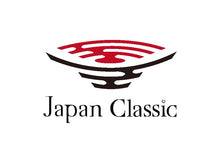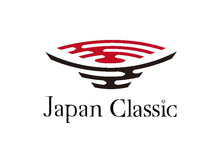Tempura: The Crispy Japanese Art That’s More Than Just Fried Food
About the Author
Hayato Eihara
I am a Japanese resident living in Japan!
With years of experience, I share in‑depth and detailed information about Japan with the world.
As part of my mission to promote Japanese culture, I also run Japan Classic, an online shop specializing in unique, high‑quality tableware. If you’re interested, feel free to check it out!
Table Of Contents
• Introduction – Tempura’s popularity and cultural charm.
• History of Tempura – Origins, foreign influences, and evolution in Japan.
• The Art of Making Tempura – Batter, oil temperature, frying technique.
• Varieties of Tempura – Vegetables, seafood, and seasonal specialties.
• Serving Tempura – Traditional accompaniments, dipping sauces, and plating.
• Tempura in Modern Dining – Creative twists and global influence.
• Conclusion – Why tempura remains a beloved Japanese culinary treasure.
Introduction – A Japanese Classic with Global Appeal
Golden, delicate, and crisp tempura is one of Japan’s most celebrated dishes. At first glance it might seem like “just fried food,” but authentic tempura is a masterclass in subtlety and skill. It is light, airy, and never heavy, with a paper‑thin crust that gives way to the natural sweetness of fresh vegetables or seafood inside.
Tempura reflects Japan’s approach to cooking: an appreciation of seasonal produce, meticulous technique, and thoughtful presentation. Whether enjoyed in a neighborhood café, a fine-dining restaurant, or at home, this dish is as much about beauty as flavor.
And as with many Japanese specialties, presentation matters deeply. The right bowl or plate often handcrafted ceramics or made in Japan tableware turns tempura from a simple meal into a sensory experience. A graceful glaze, the weight in the hand, and the way the rim frames the food all play a part in making the moment special.
This guide takes you through tempura’s fascinating history, the careful process behind it, the many ways it is served, and how it has evolved for modern tastes all while showing you how quality tableware like Japanese plates, Japanese ceramic bowls, and Japanese serving bowls can make your tempura moments even more memorable.
From Portugal to Japan – A Brief History of Tempura
Although it is now a proud symbol of Japan, tempura’s story begins far away. In the 16th century, Portuguese traders and missionaries arrived in Japan and brought with them the cooking method of coating vegetables in batter and frying them something common in their homeland.
The name “tempura” likely comes from the Latin word tempora, referring to fasting days in the Christian calendar, when meat was avoided and fish or vegetables were eaten instead. Early Japanese versions had a thick batter, fried in rendered animal fat, and were seasoned richly.
As centuries passed, Japanese cooks refined the technique. In place of heavy batter, they created a light coating made from flour and cold water, sometimes with starch for extra crispness. Sesame oil replaced lard, giving the dish a fragrant aroma. By the Edo period in the 1600s, tempura had become a favorite in the capital’s busy food stalls and in refined dining rooms, often arranged on traditional Japanese plates designed to highlight the golden colors.
Today, tempura is both a homely comfort food and a refined course in multi‑dish banquets. Wherever it is served, it still holds the elegance that made it famous.
The Craft – How Perfect Tempura is Made
The Batter
Tempura batter is incredibly simple usually just flour, cold water, and a beaten egg. Sometimes a little potato starch or rice flour is added to keep the coating crisp. The real secret is minimal mixing: a few lumps are fine, as they help prevent excess gluten that could make the crust chewy.
Frying Temperature
The oil often a light sesame oil blended with vegetable oil should be hot enough (around 350–375°F / 175–190°C) so the batter cooks instantly and does not absorb oil. Too cool, and the tempura becomes greasy; too hot, and it will brown before cooking through.
A Simple Tempura Recipe
Ingredients:
• ½ pound shrimp or prawns, peeled and deveined
• 2 cups sliced vegetables (such as sweet potato, pumpkin, bell pepper, or green beans)
• ¾ cup all‑purpose flour
• ½ cup potato starch or cornstarch (divided)
• 1 large cold egg
• ¾ cup iced sparkling water
• Oil for deep frying (neutral oil with a little sesame oil)
Method:
1. Heat the oil in a deep pan to 350°F (175°C).
2. Lightly dust the shrimp and vegetables with some of the potato starch.
3. In a bowl, lightly beat the egg with the cold water.
4. Add flour and the remaining starch, stirring briefly the batter should be lumpy.
5. Dip ingredients in the batter, then slide them into the oil. Fry in small batches for 2–3 minutes until pale golden and crisp.
6. Drain on paper towels and serve immediately in a Japanese ceramic plate or Japanese ceramic bowl with dipping sauce.
The Variety – What Goes Into Tempura
One reason tempura never gets boring is the variety of ingredients used many chosen to match Japan’s seasons.
From the sea come shrimp, prawns, white fish, squid, and scallops.
From the land sweet potato, carrot, pumpkin, lotus root, eggplant, mushroom, and seasonal greens.
There is also a popular style called “mixed fritter” where finely sliced vegetables and sometimes small shrimp are bundled together and fried in one light nest.
This focus on seasonality means tempura changes through the year, making it a dish to return to again and again.
Serving Tempura – Styles and Tableware that Enhance the Experience
In Japan, tempura can be part of an elegant multi‑course meal, offered as a quick lunch, or savored in a special rice or noodle bowl. The way it is served and the tableware it is served in shapes the dining experience.
One popular combination is tempura with noodles either buckwheat noodles in a clear broth or thick wheat noodles in a richer soup. The tempura may rest gently on top, lending flavor to the broth, or be placed on a side plate to preserve every bit of crispness. This pairing feels complete in a handcrafted piece like the Colorful Drop Rim Noodle Bowl Red, whose deep shape keeps the soup hot while its vibrant glaze beautifully frames the golden tempura.
Another well‑loved style is tempura served over steamed rice. Plump shrimp and colorful vegetables are arranged on top, with a drizzle of sweet‑savory sauce soaking into the rice below. It’s the comfort of a full meal in one bowl, and using the Three Colors of Ten Grass Rice Bowl Red adds that authentic “made in Japan” touch through both craftsmanship and design.
For gatherings or more formal occasions, tempura is often presented on larger plates alongside dipping sauce, pickles, and seasonal side dishes. Having ample space around each piece lets the light batter and ingredients stand out. A plate such as the White Slip Peony 7.5 Sun Round Plate – Blue turns this into a visual experience, with its soft floral design and premium ceramic finish enhancing the food it holds.
Why the Bowl or Plate Matters
In Japanese dining, presentation is never an afterthought. The glaze, shape, and feel of the bowl or plate are carefully chosen to match the food. Premium tableware whether a deep Japanese dinner bowl, a small ceramic bowl, or an authentic Japanese plate helps keep food at its best and adds to the pleasure of eating.
Handmade ceramic bowls and handmade plates do more than serve a practical purpose: they connect the meal to centuries of ceramic artistry in Japan. From traditional Japanese plates with delicate motifs to modern glazes found in Japanese ceramics online shops, each piece tells a story that complements the dish it holds.
Tempura in Today’s Kitchens – Creativity and Global Influence
While traditional prawn and vegetable tempura are still the most loved, modern chefs are finding creative ways to use the technique. Some explore gluten‑free or vegan batters, others use unusual ingredients like herbs, cheese, or even sweet fruits. Tempura has also found a place in international cuisine, showing up in sushi rolls, as a crunchy topping for salads, or as part of fusion dishes that blend Japanese frying with different cultural flavors.
Its adaptability explains why tempura has travelled so far from its simple beginnings. Whether served with a dipping sauce, over rice, with noodles, or as a colorful plate for sharing, tempura remains an instantly recognizable part of Japanese food culture.
Conclusion – More Than Just Fried Food
From its roots in Portuguese cooking to its place as a Japanese culinary treasure, tempura has always been about more than coating and frying. It is about technique, timing, freshness and presentation.
When paired with the right tableware from Japanese rice bowls to Japanese dinner plates tempura becomes not just a dish, but an experience that is as pleasing to the eyes as it is to the palate. The feel of made in Japan ceramics in the hand, the way quality tableware frames each piece, and the crisp bite of the first mouthful all work together to make tempura unforgettable.
Whether you enjoy it at a street stall in Tokyo or recreate it in your own kitchen with Japanese serving bowls and ceramic plates, remember the artistry of tempura lies not only in the cooking, but in the way it is brought to the table.
Shop Now At Japan Classic




